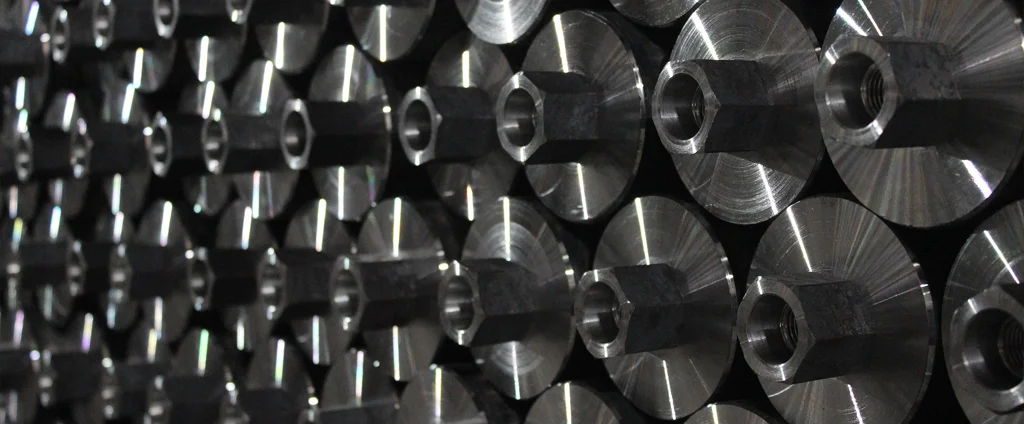SAE/AISI 1055 Carbon Steel (UNS G10550)

SAE/AISI 1055 is a medium carbon steel offering a balanced combination of strength, hardness, and wear resistance. It is frequently selected for components that require moderate toughness and durability, such as gears, axles, shafts, and forging applications.
| Chemical Composition | ||
|---|---|---|
| Element | Min | Max |
| Iron | 98.4% | 98.9% |
| Carbon | 0.50% | 0.60% |
| Manganese | 0.60% | 0.90% |
| Phosphorous | —— | 0.04% |
| Sulfur | —— | 0.05% |
The following table provides a list of SAE/AISI 1055 properties in both SI and US customary/Imperial units.
Click on the button to switch between Metric and Imperial units.
| Physical Properties | Metric |
|---|---|
| Density | 7850 kg/m3 |
| Mechanical Properties | Metric |
| Tensile Strength (Ultimate) | 660 MPa |
| Tensile Strength (Yield) | 560 MPa |
| Young’s Modulus (E) | 190 - 210 GPa |
| Bulk Modulus (K) | 140 GPa |
| Shear Modulus (G) | 80 GPa |
| Elongation at Break | 10% |
| Poisson’s Ratio (ν) | 0.27 - 0.30 |
| Brinell Hardness | 197 |
| Thermal Properties | Metric |
| Thermal Conductivity | 50 W/m·K |
| Specific Heat Capacity (Cp) | 470 J/kg·K |
| Coefficient of Thermal Expansion (αL) | 1.1×10-5 1/°C |
| Electrical Properties | Metric |
| Electrical Conductivity | 6.38×106 S/m |
| Electrical Resistivity | 1.57×10-7 Ω·m |
The values in this table are approximate and can vary depending on various factors such as the specific manufacturing process and heat treatment applied to the alloy.
Advantages & Disadvantages of 1055 Carbon Steel
| Advantages | Disadvantages |
|---|---|
| Good strength and hardness | Limited corrosion resistance |
| Cost-effective | Lower toughness |
| Good machinability | Limited alloying options |
| Good weldability |
Applications of 1055 Carbon Steel
Due to its mechanical strength, hardness, and wear resistance, this steel is used across a variety of demanding applications, including:
- Blades and Cutting Tools: Used in the production of knives, swords, machetes, and other cutting tools. Its good strength, hardness, and ability to retain sharpness make it suitable for these applications.
- Automotive and Machinery Components: Utilized in the manufacturing of automotive parts like crankshafts, camshafts, gears, axles, and couplings. Also used in machinery components such as shafts, sprockets, and machine parts subjected to moderate loads.
- Hand Tools and Hardware: Hand tools like hammers, chisels, wrenches, and screwdrivers benefit from its durability and wear resistance. Also applied in hardware components such as hinges, brackets, and fasteners.
- Springs and Spring Clips: The alloy’s moderate strength and hardness make it suitable for manufacturing coil springs, flat springs, and spring clips.
- Agricultural Implements: Employed in fabricating tools such as sickles, scythes, hoes, and shovels due to its edge retention and robustness.
- Construction and Structural Components: Brackets, supports, and frames in construction benefit from its strength, weldability, and cost-effectiveness.
- Railroad and Transport Industry: Used for railway spikes, bolts, and connecting rods where strength and durability are essential.
- General Manufacturing: Common in shafts, pins, couplings, and gears where a balance of strength, hardness, and machinability is needed.
